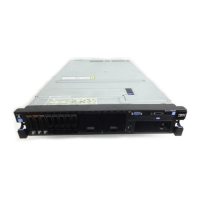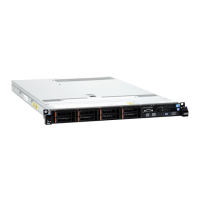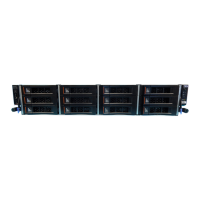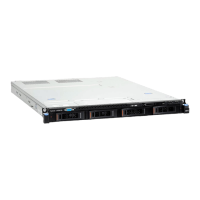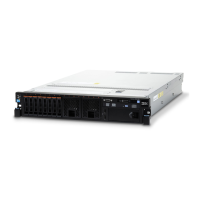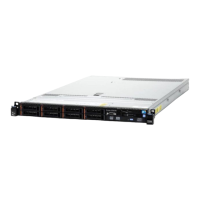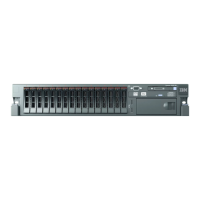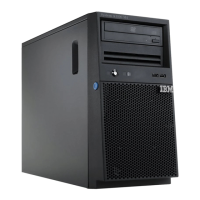Reliability, availability, and serviceability
Three important computer design features are reliability, availability, and
serviceability (RAS). The RAS features help to ensure the integrity of the data that
is stored in the server, the availability of the server when you need it, and the ease
with which you can diagnose and correct problems.
Your server has the following RAS features:
v 3-year parts and 3-year labor limited warranty (Machine Type 7382)
v 24-hour support center
v Automatic error retry and recovery
v Automatic restart on non-maskable interrupt (NMI)
v Automatic restart after a power failure
v Backup basic input/output system switching under the control of the integrated
management module II (IMM2)
v Built-in monitoring for fan, power, temperature, voltage, and power-supply
redundancy
v Cable-presence detection on most connectors
v Chipkill memory protection
v Diagnostic support for ServeRAID and Ethernet adapters
v Error codes and messages
v Error correcting code (ECC) L3 cache and system memory
v Simple-swap cooling fans with speed-sensing capability
v Hot-swap hard disk drives
v Information and light path diagnostics LED panels
v Integrated Management Module II (IMM2)
v Light path diagnostics LEDs for memory DIMMs, microprocessors, hard disk
drives, power supplies, and fans
v Memory mirrored channel support (memory mirrored channel are mutually
exclusive of each other)
v Memory error correcting code and parity test
v Memory down sizing (non-mirrored memory). After a restart of the server after
the memory controller detected a non-mirrored uncorrectable error and the
memory controller cannot recover operationally, the IMM logs the uncorrectable
error and informs POST. POST logically maps out the memory with the
uncorrectable error, and the server restarts with the remaining installed memory.
v Menu-driven setup, system configuration, and redundant array of independent
disks (RAID) configuration programs
v Microprocessor built-in self-test (BIST), internal error signal monitoring, internal
thermal trip signal monitoring, configuration checking, and microprocessor and
voltage regulator module failure identification through light path diagnostics
v Parity checking on the small computer system interface (SCSI) bus and PCI-E
buses
v Power management: Compliance with Advanced Configuration and Power
Interface (ACPI)
v Power-on self-test (POST)
v Predictive Failure Analysis (PFA) alerts on memory, microprocessors, SAS/SATA
hard disk drives or solid state drives, fans, power supplies, and VRM
v Redundant Ethernet capabilities with failover support
v Redundant hot-swap power supplies
v Redundant network interface card (NIC) support
v Remind button to temporarily turn off the system-error LED on the optional
advanced operator information panel
v Remote system problem-determination support
v ROM-based diagnostics
v ROM checksums
Chapter 1. The IBM System x3300 M4 Type 7382 server 13
